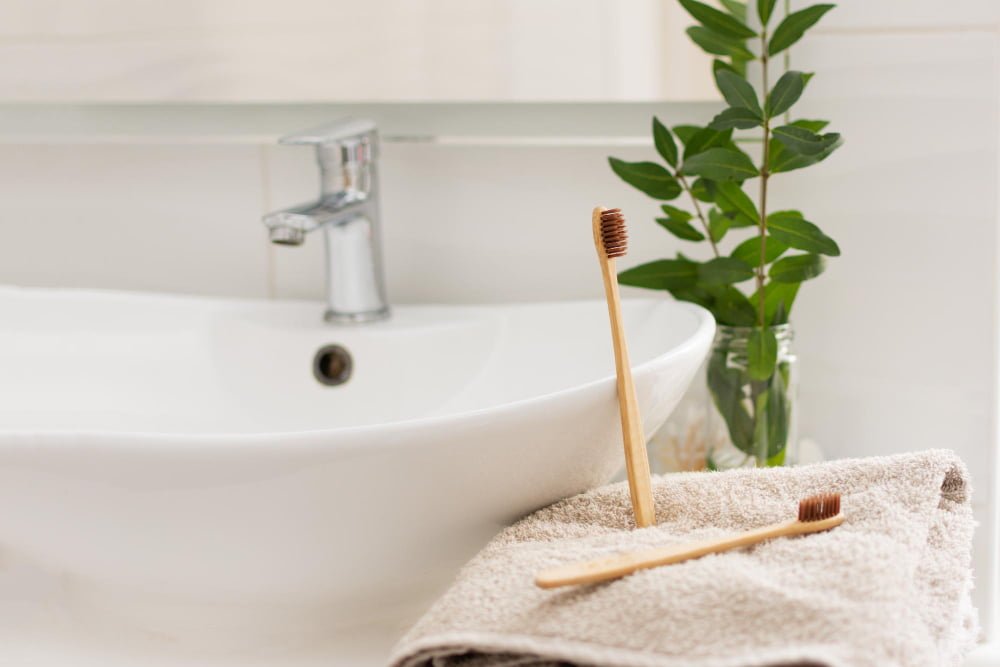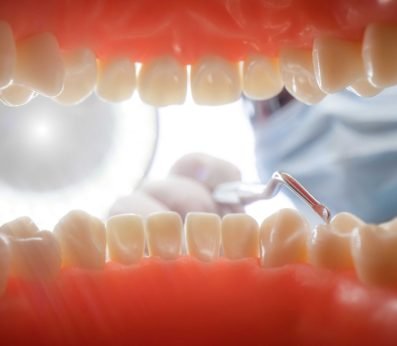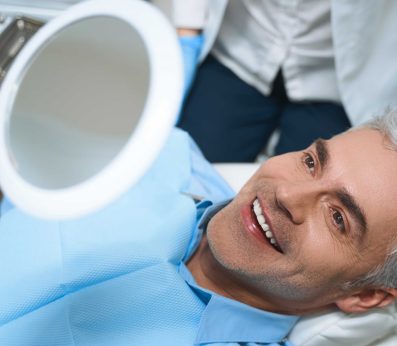
1. How often should I replace my toothbrush?
To maintain optimal oral hygiene, dental professionals recommend replacing your toothbrush approximately every 3 to 4 months. However, if you notice that the bristles are frayed or worn before this time frame, it’s advisable to replace it sooner. Regularly changing your toothbrush helps ensure effective plaque removal and prevents the accumulation of bacteria on the brush, contributing to better overall dental health. Additionally, a fresh toothbrush with straight, intact bristles allows for more efficient cleaning of your teeth and gums.
2. What type of toothbrush bristles is recommended for optimal cleaning?
For optimal cleaning, dental professionals generally recommend using a toothbrush with soft bristles. Soft bristles are effective in removing plaque and debris from the teeth and gums without causing undue damage to the enamel or irritating the gums. The gentle nature of soft bristles is particularly beneficial for individuals with sensitive teeth or gums.
Soft-bristled toothbrushes are designed to be gentle on the tooth enamel and the surrounding gum tissues, making them suitable for most people. They provide effective cleaning while minimizing the risk of abrasion or discomfort.
It’s important to note that using a toothbrush with hard or medium bristles may lead to enamel wear and gum recession over time. Therefore, unless specifically advised by a dental professional for certain conditions, opting for a toothbrush with soft bristles is generally considered a safe and effective choice for maintaining oral health.
3. Is it better to use a manual or electric toothbrush?
The choice between a manual or electric toothbrush depends on individual preferences and oral health needs. Both types can be effective if used correctly, but each has its advantages.
Manual Toothbrush:
- Cost-effective and widely accessible.
- Requires proper brushing technique for optimal results.
- Suited for those with good manual dexterity.
- Portable and convenient for travel.
Electric Toothbrush:
- Can be more effective at plaque removal, especially for those with limited dexterity.
- Some models have built-in timers to ensure adequate brushing time.
- May feature various brushing modes tailored to specific needs (e.g., sensitive teeth, gum care).
- Suitable for individuals with orthodontic appliances or dental work.
Ultimately, the most important factor is using whichever type encourages consistent, thorough brushing. Some people prefer the simplicity of a manual toothbrush, while others find the technology and features of an electric toothbrush more beneficial. It’s advisable to consult with a dentist to determine the most suitable option based on individual oral health requirements.
4. What is the proper technique for brushing my teeth?
The proper technique for brushing your teeth involves the following steps:
- Choose the Right Toothbrush: Use a soft-bristled toothbrush to avoid enamel damage and gum irritation.
- Use an Adequate Amount of Toothpaste: Apply a pea-sized amount of fluoride toothpaste to your toothbrush.
- Position the Toothbrush: Hold the toothbrush at a 45-degree angle to the gums.
- Brush in Circular Motions: Gently move the toothbrush in small, circular motions to clean the front, back, and chewing surfaces of each tooth.
- Pay Attention to Gumline: Brush along the gumline to remove plaque and prevent gum disease.
- Brush the Tongue and Roof of the Mouth: Clean your tongue and the roof of your mouth to reduce bacteria and freshen breath.
- Brush for Two Minutes: Aim to brush your teeth for at least two minutes to ensure thorough cleaning.
- Use Gentle Pressure: Avoid applying excessive pressure, as it can lead to gum recession and enamel wear.
- Replace Your Toothbrush: Replace your toothbrush every 3 to 4 months or sooner if the bristles are frayed.
- Floss Daily: Incorporate daily flossing to clean between teeth and below the gumline.
Remember to brush at least twice a day, ideally in the morning and before bedtime, to maintain optimal oral hygiene. Additionally, regular dental check-ups are crucial for professional cleanings and assessments of your oral health.
5. Should I choose a toothbrush with soft, medium, or hard bristles?
Dental professionals generally recommend using a toothbrush with soft bristles for most individuals. Here’s why:
Soft Bristles:
- Gentle on the gums and tooth enamel.
- Effective in removing plaque and debris without causing irritation.
- Suitable for individuals with sensitive teeth or gums.
- Less likely to contribute to enamel wear or gum recession.
Medium Bristles:
- May be suitable for individuals with a strong brushing technique.
- Effective for removing plaque but with a higher risk of causing damage if used improperly.
- Not recommended for those with sensitive teeth or gums.
Hard Bristles:
- Can be abrasive and potentially cause enamel wear, gum recession, and tooth sensitivity.
- Generally not recommended by dental professionals for regular use.
In most cases, a soft-bristled toothbrush is considered the safest and most effective choice for maintaining oral health. If you have specific dental concerns or conditions, it’s advisable to consult with your dentist, who can provide personalized recommendations based on your individual needs.
6. Are there specific toothbrush features that can enhance oral care?
Yes, there are several toothbrush features that can enhance oral care. Here are some notable features to consider:
- Angled or Multilevel Bristles: Designed to reach difficult-to-clean areas and provide thorough plaque removal.
- Rubber Bristles or Gum Stimulators: Gentle on the gums and can help stimulate blood flow for improved gum health.
- Tongue Cleaner or Scraper: Some toothbrushes come with a built-in tongue cleaner or scraper to reduce bacteria on the tongue and improve breath freshness.
- Power Toothbrushes: Electric or battery-powered toothbrushes often have features like rotating, oscillating, or sonic movements, which can enhance plaque removal.
- Pressure Sensors: Alerts users when they are applying too much pressure during brushing, preventing potential damage to gums and enamel.
- Timers: Built-in timers encourage users to brush for the recommended two minutes, ensuring thorough cleaning.
- UV Sanitizers: Some toothbrushes have UV sanitizers to kill bacteria and germs on the brush head between uses.
- Smart Toothbrushes: Equipped with Bluetooth or other connectivity features, these toothbrushes sync with mobile apps to track brushing habits and provide real-time feedback.
When choosing a toothbrush, consider your individual preferences and needs. It’s essential to prioritize a toothbrush with features that encourage consistent and effective oral care practices. Additionally, regular dental check-ups and cleanings remain crucial components of maintaining optimal oral health.
7. Can I share my toothbrush with someone else?
It is not recommended to share toothbrushes with someone else. Sharing toothbrushes can lead to the exchange of saliva, which may contain bacteria, viruses, and other microorganisms. This practice increases the risk of spreading infections and oral health issues among individuals.
Each person has a unique oral microbiome, and sharing a toothbrush can introduce foreign microorganisms into the mouth, potentially causing oral infections or illnesses. Additionally, certain conditions, such as cold sores or bleeding gums, can increase the likelihood of transmitting infections through shared toothbrushes.
To maintain good oral hygiene and reduce the risk of cross-contamination, it is advisable for each person to use their own toothbrush and avoid sharing oral care tools. If you find yourself without your toothbrush in a situation where sharing seems unavoidable, it is recommended to thoroughly rinse the toothbrush with water before use and replace it with a new one as soon as possible.
8. How do I clean and sanitize my toothbrush?
Cleaning and sanitizing your toothbrush is a simple yet effective practice to maintain oral hygiene. Here are some recommended methods:
- Rinse Thoroughly: After each use, rinse your toothbrush under running water to remove toothpaste, saliva, and debris.
- Soak in Antibacterial Mouthwash: Place the toothbrush head in antibacterial mouthwash for about 15 minutes to help kill bacteria. Ensure the mouthwash is alcohol-free if using this method.
- Use Hydrogen Peroxide: Soak the toothbrush in a cup of hydrogen peroxide for a few minutes. Rinse it thoroughly with water before using.
- Boil the Toothbrush: Boil a small pot of water and submerge the toothbrush in it for 3 to 5 minutes. Allow it to cool before use.
- Denture Cleaner Tablets: Dissolve a denture cleaner tablet in water and soak the toothbrush according to the product instructions.
- UV Toothbrush Sanitizer: Consider using a UV toothbrush sanitizer, which uses ultraviolet light to kill bacteria. Follow the device’s instructions for optimal usage.
- Replace Regularly: Replace your toothbrush every 3 to 4 months, or sooner if the bristles are frayed. Regular replacement is an effective way to ensure a clean and efficient toothbrush.
It’s important to note that while these methods can help maintain a clean toothbrush, no method can make a toothbrush completely sterile. Practicing good oral hygiene, storing your toothbrush in an upright position to allow it to air dry, and avoiding sharing toothbrushes are additional measures to promote oral health.
9. Are there eco-friendly toothbrush options available?
Yes, there are several eco-friendly toothbrush options available that aim to reduce environmental impact. Here are some eco-friendly toothbrush alternatives:
- Bamboo Toothbrushes: Made from biodegradable bamboo handles, these toothbrushes are a sustainable alternative to traditional plastic ones.
- Recycled Plastic Toothbrushes: Some toothbrushes feature handles made from recycled plastics, reducing the demand for new plastic production.
- Biodegradable Handles: Toothbrushes with handles made from biodegradable materials, such as cornstarch or other plant-based plastics, are environmentally friendly.
- Replaceable Head Toothbrushes: Toothbrushes with replaceable heads reduce waste by allowing users to replace only the bristle portion instead of the entire brush.
- Compostable Packaging: Look for toothbrushes that come in compostable or minimal packaging to further reduce environmental impact.
- Charcoal-Infused Bristles: Some eco-friendly toothbrushes feature bristles infused with activated charcoal, known for its natural antibacterial properties.
When choosing an eco-friendly toothbrush, consider the entire lifecycle of the product, from materials used to disposal. Additionally, check for certifications or labels that indicate the product’s sustainability, such as being certified by organizations like the Forest Stewardship Council (FSC) or having the USDA Certified Biobased label.
10. What role does the size and shape of a toothbrush play in effective cleaning?
The size and shape of a toothbrush play a crucial role in effective cleaning, influencing how well you can reach different areas of your mouth. Here are key considerations:
- Head Size: A smaller toothbrush head allows for better maneuverability and access to hard-to-reach areas, such as the back molars and behind the front teeth. It can provide more precise control during brushing, ensuring that each tooth surface is adequately cleaned.
- Bristle Arrangement: Multi-level or angled bristles can help reach between teeth and along the gumline, improving plaque removal. Crisscross or angled bristle patterns can enhance the ability to clean tooth surfaces effectively.
- Handle Grip: A comfortable and ergonomic handle grip promotes proper brushing technique and prevents hand fatigue during brushing. A well-designed handle ensures a secure grip, facilitating effective control and movement of the toothbrush.
- Slim Design: A slim and streamlined design allows for better accessibility to the back of the mouth and helps prevent overstretching the jaw during brushing.
- Flexible Neck: A toothbrush with a flexible neck can adjust to the contours of the teeth and gums, improving overall coverage during brushing.
- Child-Friendly Size: Children’s toothbrushes are specifically designed with smaller heads and softer bristles to suit their smaller mouths and more delicate gums.
- A well-designed handle ensures a secure grip, facilitating effective control and movement of the toothbrush.
- Crisscross or angled bristle patterns can enhance the ability to clean tooth surfaces effectively.
Choosing a toothbrush with the right size and shape for your mouth allows for thorough cleaning of all tooth surfaces and contributes to effective plaque removal. It’s essential to replace your toothbrush regularly, ensuring that it continues to provide optimal cleaning benefits. If you have specific dental concerns or conditions, consult with your dentist for personalized recommendations on the most suitable toothbrush for your needs.



